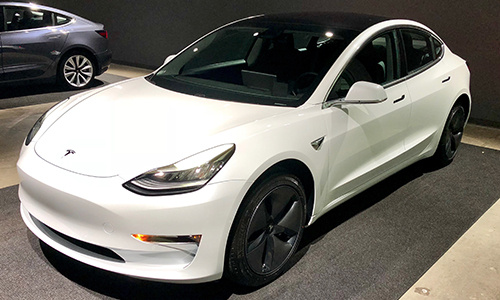By CRM Staff
Toronto, Ontario — May 4, 2018 — Collision Repair magazine’s partner publication Repairer Driven News, recently reported that Tesla has publicized the company’s plans to open its own bodyshops this year. The announcement for plans to develop repair facilities was first made back in May of 2017 in its first-quarter earnings letter. Two months prior, Tesla stated it would ramp up its efforts to expand and improve its certified collision repair network. This followed a Motley Fool report of an eight-month wait for Tesla parts.
Tesla has yet to share information detailing its plans for the new shops, or the impacts it will have on its certified collision repair network – thus the question remains: will Tesla owned facilities be the exclusive repair locations for Tesla vehicles?
Tesla’s cited revenue opportunities of opening its own collision repair facilities are likely a significant motivator of this decision. One representative was quoted saying, “We expect service and other losses to reduce substantially in the coming quarters as our service infrastructure becomes significantly more utilized with the ramp of our Model 3 fleet size,” Tesla wrote in its first-quarter earnings letter to shareholders. “There are also substantial revenue generating opportunities as we open our own body shops in 2018 to improve costs of out-of-warranty repairs and as we increase our offering of accessories and merchandise.”
Repairer Driven News commented that it will be “Interesting to see how Tesla plans to cut the cost of repairs while turning autobody work into a profit centre, as the two seem like competing goals. The impending debut of company-owned body shops also raises questions about how Tesla will handle what will soon become a competing certified network of third party shops ranging from single-shop locations to large MSOs like Service King.”
The publication also raised other questions, such as what it will charge at it shops, how Tesla will get parts if the backlog issues of the past continue, how Tesla will remain impartial when recommending shops to owners, and where insurers and direct repair programs lie in all of this. Repairer Driven News does note that, “similar concerns exist under the traditional scenario of an OEM with an autobody network of both affiliated dealerships containing collision repair centres and third-party facilities.” The difference, the publication then says, is that such OEM-dealer relationships are indirect, while Tesla would directly own its certified shops, thus creating a different marketplace.
In a shareholder letter, Tesla suggested the Tesla Model 3 might be easier to repair for Tesla-Certified repair facilities.
In the letter, it is written: Higher levels of automation have been enabled by a dramatic simplification of product design. Our Model 3 general assembly line consists of fewer than 50 steps, which is about 70 percent less than conventional assembly lines. All Model 3 vehicles use only one standard body frame, down from more than 80 for Model S, a wiring harness that has 50 percent less mass than average vehicles and a fraction of the number of controllers, connectors and CPUs. All these elements are rooted in design and critical not only to our ability to reach higher levels of output in a smaller amount of factory space but also to achieve lower levels of cost.
According to Repairer Driven News, Tesla-certified body shops suggested Tesla might have been referring to manufacturing steps or incremental changes to the Model 3 architecture over time. As one wrote:
Tesla, like many other OEMs, has several different chassis bodies or “nodes” that they use during the manufacturing process (think inner structure) and they upgrade or change from time to time due to safety, efficiency or other model improvements. The point here is that the original Model S architecture has been changed numerous times yet most people do not see these changes. However at a shop and OEM level those changes make the challenges for us even greater. The point with the Model 3 is that at this point, it only has one design and zero changes or alternates which should lower their costs and improve productivity.
No announcements have yet been made on how many shops Tesla is planning to open in the coming year.
For more information on Tesla, visit tesla.com.





































